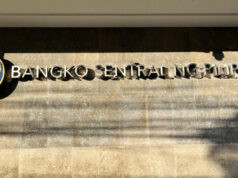Jan. FX reserves hit 20-month high
FOREIGN CURRENCY reserves rose further in January to a 20-month high, as the central bank saw bigger income from offshore investments and the state sold dollar bonds.
Gross international reserves (GIR) reached $82.132 billion last month, picking up from the $79.193-billion level logged in December and the $81.224 billion tallied in January 2018, the Bangko Sentral ng Pilipinas (BSP) reported on Thursday.
This is highest reserve level since May 2017, when the GIR stood $82.177 billion.
In a statement, the central bank said GIR grew on the back of bigger net foreign currency deposits of the national government, as well as revaluation gains from higher gold prices in the international market.
The Bureau of the Treasury raised $1.5 billion from the sale of 10-year dollar bonds to foreign investors in January.
The central bank also saw income from its investments abroad grow to $69.649 billion from $66.733 billion the previous month.
The value of the BSP’s gold holdings also went up to $8.407 billion from the $8.154 billion recorded in December.
To add, the BSP’s foreign exchange operations — which resulted in a slightly stronger peso versus the dollar — helped lift the country’s reserves.
The central bank uses dollar reserves to help temper sharp swings in the exchange rate. The peso averaged P52.4679 against the greenback in January, compared to December’s P52.7691.
The BSP employs “tactical intervention” to managing currency swings, with the view that the exchange rate should be market-determined but can also be subject to regulatory interventions to control abrupt or steep changes in the day-to-day rate.
On the other hand, reserves held under the International Monetary Fund (IMF) edged up to $476.9 million from $473.8 million previously. The country’s special drawing rights — the amount that can be tapped under the IMF’s reserve currency basket — steadied at $1.184 billion.
January’s GIR shot past the $77-billion projection of the central bank for this year.
The reserves can cover up to 7.2 months of import payments, compared to December’s seven months.
The BSP said this was “ample” liquidity cover as it is well above the three-month global standard.
The GIR is also equivalent to 6.2 times the Philippines’ short-term foreign debt.
Credit raters have been citing the hefty GIR level as a source of strength for the Philippines, as it serves as a sufficient buffer against external shocks which could unduly weigh on the country’s foreign obligations. — Melissa L. T. Lopez



